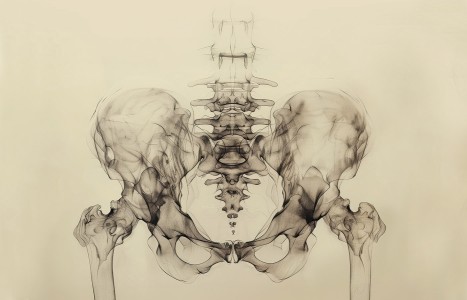People today want convenience, whether it be from their bank, credit card, favorite retail store, or restaurant. They demand it from the companies who hold their loyalty, including their health care providers (you). They don’t want to call and possibly be put on hold, and they want to use an app or schedule an appointment on your website. Here are three reasons your practice can gain by switching to online appointment scheduling.
What’s Holding Acupuncture Back in 2025?
- Fifteen years after Stumpf, et al., provided the acupuncture profession a 21st-century roadmap to greater recognition, utilization and security, today the way forward remains littered with obstacles.
- Needle acupuncture has become the darling of complementary medicine, but acupuncturists are being largely passed over by mainstream medical and allied health providers, regulators, legislators, insurance plans, and governmental agencies.
- Understanding the profession’s role and responsibility for this outcome is necessary to charting a course correction.
Fifteen years after Stumpf’s “Mainstreaming Acupuncture: Barriers and Solutions” provided the acupuncture profession a 21st-century roadmap to greater recognition, utilization and security, today the way forward remains littered with obstacles – some external, some homegrown; both existential.
While acupuncture continues to garner increased interest as a complementary treatment option, the practice of acupuncture as a system-based medicine has arguably failed to keep pace with the popularity of its namesake needle-based treatment. Instead of gaining traction and progressing as a profession in the past decade, needle acupuncture has become the darling of complementary medicine, while acupuncturists are being largely passed over by mainstream medical and allied health providers, regulators, legislators, insurance plans, and governmental agencies.
Understanding the profession’s role and responsibility for this outcome is necessary to charting a course correction. It is time for acupuncturists and the profession to take an inventory of their strengths and weakness: what’s working and what’s not. Only then can acupuncturists become the agents of change for a profession and public ready for our health care system to evolve.
1. The Growing Recognition of Acupuncture
One prominent takeaway from Stumpf’s paper was the rising recognition of acupuncture in the context of modern health care. As patient preferences shift toward holistic and integrative approaches, acupuncture has emerged as a valuable option for managing various conditions, including chronic pain, stress and anxiety.
Stumpf emphasized the necessity for acupuncture to transition from a niche practice to one that is commonly accepted alongside conventional medical treatments. This progression is obvious and essential not only for patient access, but also for ensuring that acupuncture practitioners can participate fully in multi-disciplinary health care teams.
As the health care landscape advances, patients increasingly seek holistic treatment options, making it imperative that acupuncturists are recognized as the subject-matter experts in our medicine and providers of a legitimate therapeutic system of medicine and treatment modality.
2. Barriers to Integration
Despite the potential benefits, Stumpf identified several barriers that hinder the mainstream acceptance of acupuncture. One significant barrier is rooted in the misconceptions and stereotypes that surround acupuncture as a practice. Many health care professionals may lack an understanding of acupuncture’s principles and evidence-based efficacy, leading to skepticism about its use in clinical settings.
Acupuncturists cannot wait or trust that sufficient formal training in acupuncture will materialize in medical education programs. This is unlikely to change for decades and will continue to produce health care providers ill-equipped to recommend or refer patients to acupuncture practitioners. The same can be said about regulatory challenges, including inconsistent licensure and reimbursement policies across different states and regions. Confronting these barriers is the first step toward developing effective strategies for integration.
Developing a national strategy for identifying acupuncturists’ common scope of practice in the United States is overdue. This will support achieving 50-state licensure, make federal recognition easier to implement, streamline more consistent insurance policies and reimbursement, and reduce scope disparities among states.
3. The Need for Educational Initiatives
To overcome the identified barriers, Stumpf advocated for comprehensive educational initiatives targeting both medical professionals and the general public. This education might involve workshops, seminars and collaborative practice sessions that explore integrative approaches to patient care. By fostering an environment in which health care professionals are better informed about acupuncture, the stigma and misconceptions surrounding the practice can be reduced and overcome.
Acupuncture societies/associations should prioritize engaging directly with other allied health providers and physician groups to foster collaboration that highlights the value and benefits of acupuncture services. Find creative ways to build relationships outside the acupuncture bubble. It’s impossible to engender confidence and communicate effectively with outside groups when there is no existing relationship. Find a way to break the ice in your community.
4. The Importance of Evidence-Based Research
A central theme in Stumpf’s 2010 thesis was his call for more rigorous, evidence-based research on acupuncture. On this count, the profession has succeeded in generating thousands of published studies. PubMed now identifies 13,320 acupuncture-related studies.
Today, there is ample evidence to support the safe and effective use of acupuncture and Chinese herbal medicine. So, why is the profession being confronted with claims of thin, weak, or absent evidence-based research? Call it denialism, confirmation bias, belief perseverance, cognitive dissonance, or the backfire effect; whatever the term, it needs to be overcome. But this is unlikely without first signaling that acupuncturists are unified and serious about bridging professional divides, followed by more relationship building.
5. Strategic Advocacy for Policy Change
The final takeaway from Stumpf’s paper highlighted the need for strategic advocacy efforts aimed at creating supportive policies for acupuncture. Advocacy groups, practitioners and stakeholders must work collaboratively to promote legislation and policies that recognize and facilitate use of acupuncture in different health care contexts. Additionally, advocating for licensure standards and regulatory frameworks that uphold professional practices can help ensure the profession is able to utilize its full training, knowledge, skills, and abilities to meet patients’ needs.
By mobilizing stakeholders to advocate for systemic changes, the acupuncture profession can and will secure its place as a valued part of a modern integrated health care model.
But before real strides can be made, we have to look in the mirror and answer some tough questions. When after 50 years, a profession is still debating the proper title of its practitioners; and when education and licensing standards vary from state to state; and when practitioners demand or expect use of privileges and bonafides that are unauthorized or unearned – what signals does that send to students, colleagues, allied health providers, physician groups, regulators, and legislators?
It’s certainly not inspiring or expected of practitioners entrusted to a proud ancient system of medicine. It’s within acupuncturists’ power to define themselves, but professions are primarily defined by their current minimum training and licensing standards. So, a look in the mirror shows acupuncturists to have lower minimum training and licensing standards than other autonomous allied specialty practitioners and physicians.
As acupuncturists, we control the narrative and set the standards for education, practice and care. If the profession wants to be on equal footing with other medical professions, then equal training, regulation, collaboration, and performance is the price to pay.
So much is expected of this profession because so much is possible, but only if the profession is the best version of itself. As health care continues to evolve, embracing complementary systems of medicine and treatment options like acupuncture will be crucial for meeting the needs of well-informed patients seeking holistic care solutions.
Clearly, the journey to mainstreaming acupuncture remains full of challenges; but with greater focus, understanding of the obstacles, strategic planning, and self-discipline, acupuncturists can pave the way forward for successful integration into contemporary health care.
Working together is imperative. It’s more important today than at any other time in recent memory. The profession has to identify its priorities and apply focus, energy and resources on key issues that advance acupuncturists’ credibility and opportunity to practice at the top of their training, knowledge, skills, abilities, and scope.
This means finding and celebrating our common interests, experiences and goals. If we cannot agree on these fundamentals, then meaningful progress will remain elusive.



